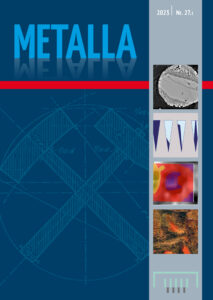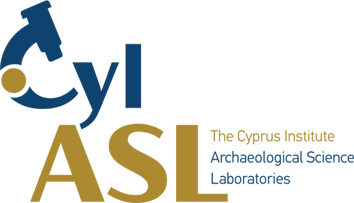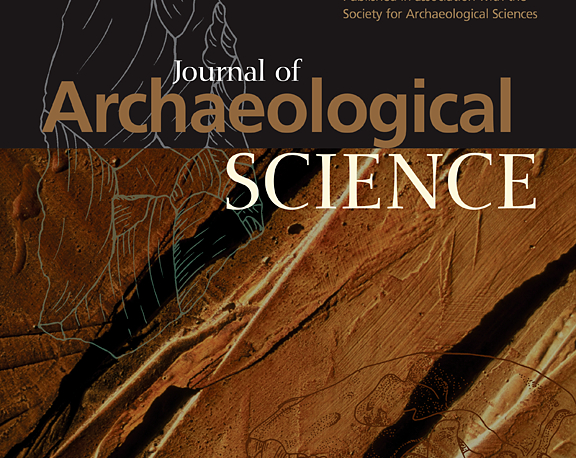A Droplet of Liquid Steel: Prills in Crucible Steel Production Remains
Meghna Desai, Sriperumbudur Jaikishan and Thilo Rehren

The formation of steel prills is evident from all crucible steel production ceramics. The paucity of crucible steel ingots in the archaeological record means that the full production chaîne opératoire remains incompletely known and partly speculative. Here, we use the analysis of prills from crucible slags and crucibles to explore the composition of the missing ingots and to learn more about their formation conditions. To test the correlation of prill compositions with the ingots and/or the crucible ceramic, we examined prills formed in two different crucible types ferruginous and nonferruginous, used in Telangana (India) and Merv (Turkmenistan) crucible steel production, respectively. Both crucible types, when fired at high temperatures under reducing conditions, form prills across the crucible profile, i.e. in the outer fuel ash glaze, the crucible body and the inner crucible slag. Ferruginous crucibles from Telangana showed abundant, pronounced and relatively large prills as compared to the ironpoor kaolinitic crucibles of Merv. Factors including the clay selection and addition of various tempers, fuel ash and crucible charge all showed an influence on the prill composition. Using SEMEDS as our analytical tool, we discuss the factors that influence the alloying elements in prills, the prill microenvironments and their potential relationship to the corresponding ingots.
Desai, M., Jaikishan, S. and Rehren, Th.

Abstract
Radiocarbon analysis is increasingly used to directly date archaeological and historical metal objects, ranging from low-carbon bloomery iron to steel and cast iron. However, little is known about the isotopic homogeneity of iron-carbon alloys, particularly relating to the formation of primary cementite during crystallisation. Here, we present 14C measurements for five crucible steel ingots and one crucible steel object from Telangana in south-central India. Two of the ingots were analysed twice. The results show a very wide scatter of 14C dates, far exceeding the expected age range for this assemblage. The repeat analysis of one of the ingots gave also widely different results, indicating a fundamental problem with the 14C analysis of crucible steel. We discuss the various factors that could have influenced the measured isotopic values, including variability in raw material, sampling contamination, and fractionation during the cleaning of the metal in hot acid leading to excessive sample mass losses prior to the extraction of carbon from the metal. We argue that mass-dependant fractionation of the different carbon isotopes between austenite and cementite during solidification of the ingot, and subsequent selective dissolution of one metal phase over the other, led to a distortion of the 14C signature to seemingly older ages. We recommend further research to explore the compound-specific isotopic signature of high-carbon iron alloys and the effect of selective corrosion on such material, to reduce potential errors in 14C dating of steel and cast iron.
Making and working Egyptian blue- a review of the archaeological evidence
I. Kovalev , A.S. Rodler, C. Brøns , Th. Rehren
Abstract

As the earliest artificial pigment, Egyptian blue has a millennia-long history of production, processing/working, and use. This paper offers a review of the published archaeological evidence for Egyptian blue production, aiming to identify common and potentially diagnostic criteria for each process step to aid future identification and interpretation of Egyptian blue workshops sensu lato. We identify systematic differences in the production evidence between Late Bronze Age and Hellenistic to Late Roman sites, respectively, and propose a model to distinguish between primary production and secondary/artistic processing of Egyptian blue. Finally, we note the absence of direct evidence for the production and processing of Egyptian blue for much of the known period of its use.

Abstract
Zu den wertvollsten Schöpfungen antiken Goldschmiedehandwerks gehört sicherlich der Grabschatz des jung verstorbenen Königs Tutanchamun, dessen Entdeckung sich gerade zum hundertsten Male jährt. Und seine goldene Mumienmaske ist darin die Ikone der ägyptischen Archäologie schlechthin. Die formvollendet modellierten, porträthaften Gesichtszüge Tutanchamuns verkörpern den Glanz und die Schönheit des Alten Ägypten sowie die Sehnsucht nach ewigem Leben im Jenseits wie kaum ein anderer Fund aus der Zeit der Pharaonen. Unverständlicherweise war nun gerade dieses populäre Werk bislang zwar aus ägyptologisch-kunsthistorischer Perspektive untersucht worden, eine sorgfältige technologisch-naturwissenschaftliche Analyse des Objekts stand aber aus. Eine im Jahr 2015 notwendig gewordene restauratorische Bearbeitung bot daher eine »goldene Chance«, dieses Schlüsselwerk des Grabinventars zu untersuchen und damit ein langgehegtes Forschungsdesiderat zu verwirklichen. Die umfangreiche Studie zeichnet eine Chronographie der Entdeckung der Maske und der Zeit nach ihrer Auffindung bis heute. Reich illustriert anhand detaillierter fotografischer Aufzeichnungen, Grafikenund Archivmaterialien beleuchtet sie den Fundkontext und ihre Herstellung inklusive der Verarbeitung von Gold, farbigen Gläsern und Steinen sowie Quarzkeramik. Ergänzt um die Ergebnisse chemischer Analysen dieser antiken Materialien bietet die Arbeit ein profundes Gesamtverständnis der älteren und jüngeren Geschichte der Maske sowie ihrer Fertigung und der Verwendung und Bearbeitung von insbesondere Gold und Glas in der späten Bronzezeit in Ägypten.
Online resources
The Archaeological Sciences group of STARC is strongly committed to the development of open-access resources for the promotion of research in the Eastern Mediterranean and Middle East. These resources include open-access best practice guides, online databases and software.
Field Sampling for Laboratory Analysis in Archaeology

Field Sampling for Laboratory Analysis in Archaeology is a handbook that aims to educate students and field archaeologists on sampling strategies in the field for future laboratory analysis. The 23 chapters of the handbook focus on archaeobotany, archaeozoology, pottery studies, human osteoarchaeology, archaeometallurgy, isotopes, phytoliths and starch analysis, micromorphology, glass studies, fish and shell remains, biomolecular archaeology and conservation science. The chapters are written by experts in their respective fields, providing guidelines on the sampling techniques and protocols used for laboratory analysis.
Basic Guidelines for the Excavation and Study of Human Skeletal Remains

This guide covers the main aspects of the excavation and macroscopic laboratory study of human skeletal remains. Specifically, the topics examined include site location, documentation, excavation, and collection, as well as cleaning, curation, inventorying, assessment of age-at-death, sex, pathology, mechanical stress, metric and nonmetric variation, and taphonomy. It cannot be overemphasized that each skeletal assemblage will pose different challenges and any approach to field recovery and laboratory procedures will have to be adapted to these. Therefore, the current guide is meant to serve only as a general outline of best practices and the described field and lab-based methods should be modified depending on individual circumstances, such as the sample size, preservation of the material, research questions and other parameters.
Excavation and Study of Commingled Human Skeletal Remains

Commingled assemblages pose special challenges in their study, nonetheless such a study can reveal key information on the osteobiography of those comprising the assemblage and the funerary practices. In addition, since commingling is both a natural and cultural process, it should be viewed not strictly as an impediment to study (though admittedly methodology has to be adapted and ‘traditional’ bioarchaeological conclusions are often limited), but as a kind of ‘life history’ of a skeletal assemblage. In line with the above, the aim of this guide is to cover various aspects of the study of a commingled skeletal assemblage, with particular emphasis on the sorting of bones of individual skeletons and the estimation of the number of individuals.
An Introduction to the Study of Burned Human Skeletal Remains

The study of burned skeletal remains is particularly challenging due to the extensive alteration of the bones, manifesting as warping, discoloration, shrinkage, and fracturing. These macroscopic changes express underlying structural and chemical alterations. As a result, the application of traditional osteological methods (morphological, metric, chemical, molecular, histological and others) is largely inhibited or should be extremely cautious. Nonetheless, the study of burned skeletal assemblages can offer unique insights to funerary practices and technologies, as well as the manipulation of dead bodies. In line with the above, the aim of this guide is to cover various aspects of the study of burned skeletal assemblages with emphasis on the alterations that occur on fire-exposed bones.
Introduction to Statistics using R

This guide offers an introduction to the application of descriptive and inferential statistics using the free language R. The topics covered include a brief presentation of the R interface, descriptive statistics, hypothesis testing for one, two and multiple samples, non-parametric tests, correlation, regression, multivariate analyses and categorical data analyses. The emphasis of the current guide is on ‘Applied Statistics’. This means that even though the mathematical principles of different statistical methods are briefly described, the key aim is to make sure the reader understands what kind of data is being analysed, what type of test is the most appropriate, how to actually implement this test correctly using R, and how to properly interpret the results. The examples given throughout this guide are taken from the archaeological sciences. However, technical terms have been intentionally avoided so that these examples are understood by non-archaeologists and it should be easy for specialists from other disciplines to see how the analyses presented could be used with their type of data and research questions.

